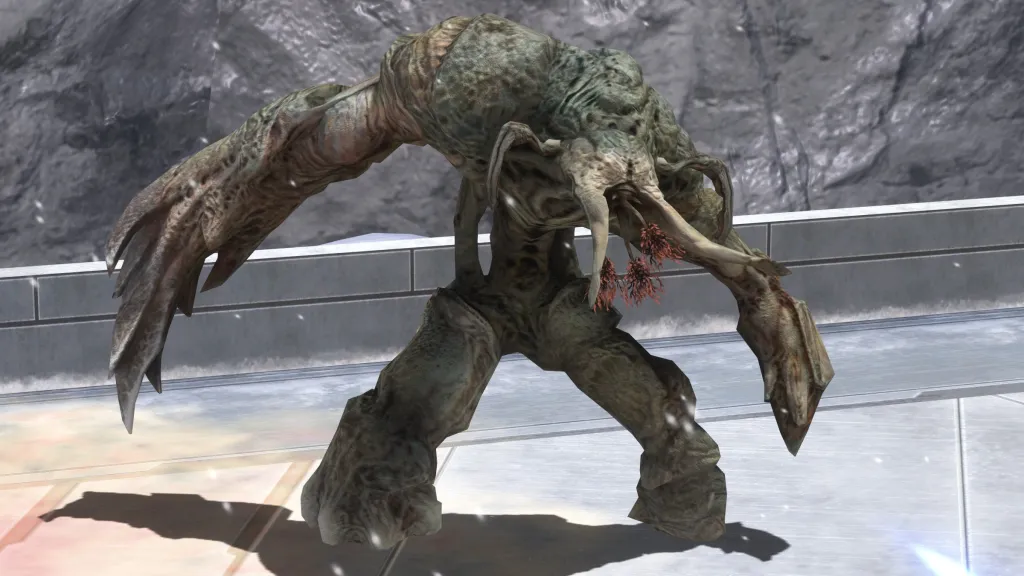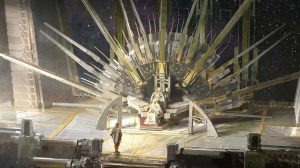The Flood completely transformed Halo and remains one of the most memorable elements of the sci-fi shooter over twenty years since it debuted. First appearing about halfway through Halo: Combat Evolved, the infectious and invasive species brought an unexpected layer of horror to the more confident combat-heavy elements of the game’s first half. Capable of transforming humans and aliens alike into corrupted new forms, the Flood even became central to the overall lore and narrative of the first Halo trilogy.
Videos by ComicBook.com
While the Flood has never reached that same level of prominence in subsequent entries in the series, that’s not to say they’re gone for good. The franchise has even set up potential ways to bring the Flood back for a new storyline. Here are the origins of the Flood, what happened to them in Halo 3, and how they could potentially return from their apparent extermination to drive future Halo titles.
The Flood’s Origins, Explained

Established as one of the greatest threats to the galaxy in Halo: Combat Evolved, the Flood were a key element of the original Halo trilogy and the overarching lore of the franchise. The Flood were among the earlier ideas for Halo‘s plotline, with Bungie artist Robert McLees taking sketches and ideas from the previous Bungie game Marathon 2: Durandal, and expanding upon the concept. A parasitic species that infects other living organisms and converts their bodies into new, horrifying hybrid forms, the Flood are considered one of the most frightening alien elements in the Halo series, with their surprise appearance in the first game’s second half giving the otherwise straightforward title a genuinely effective plot twist.
Across the series, the Flood was revealed to be one of the most dangerous entities in the universe. As eventually revealed in tie-in novels, the Flood were created by the last of the Precursors converting themselves into a new molecular form. The ancient entities went mad in this state and embraced their transformation into a parasitic new species. In the lore of Halo, this was the version of the Flood that began spreading across the cosmos.
While some planets (like an ancient Earth) were able to stave off the spread of the species, the Forerunners decided on a more dangerous last resort — total annihilation of all sentient life in the galaxy, thus depriving the Flood of any opportunity to infect and spread through other living beings. This resulted in the construction of the Halo rings, which could contain the remnants of the Flood and be activated to destroy the galaxy if they were unleashed.
How The Flood Became The True Big Bad Of The Halo Trilogy

While the primary conflict of the original Halo trilogy was set up between Master Chief and the rest of humanity against the Covenant, the true threat of the trilogy was the Flood. After the Covenant accidentally unleashed the Flood while on the Halo introduced in Halo: Combat Evolved, the game shifted focus away from fighting aliens to containing the existential threat posed by the infectious species. This is when Master Chief (and the players) learned that the species was the purpose behind the Halos. Destroying the Flood completely would require wiping out all other life in the galaxy, thus the destructive potential of the Halo stations. The Flood returned in Halo 2 as an unexpected ally, with the Gravemind that serves as the central intelligence of the species becoming the one to unite Master Chief and the Arbiter against their common enemy in the Covenant’s religious order.
The Gravemind remained a major threat, however, with the final scene of Halo 2 teasing how the Flood would try to use its recent spread to expand — and that it retained a captured Cortana as a potential weapon. Halo 3 focuses on the Gravemind’s machinations to use the Master Chief and Arbiter alliance to bring down the Covenant leadership before they could wipe out the species (and all others) by activating the Halo stations. This plan almost came to fruition, but the heroes were able to isolate the Gravemind in a remote Halo and activate it, seemingly destroying the threat once and for all while sparing the rest of existence. Subsequent Halo games moved on from the Flood. Even as tie-in material and the lore of other games explored more about the origins of the Flood and their true connection to the Precursors, the Flood stopped being a major concern in the mainline Halo games.
What Happened To The Flood After Halo 3?

That doesn’t mean the Flood is gone for good, however. Tie-in novels and comics have explored the origins and spread of the species, highlighting the true, dangerous potential of the species. The Flood served as the impetus for the “Infection” gameplay mode in Halo 3, a “Last Man Standing” challenge that pitted players against hordes of attacking Flood. The mode was even renamed after the Flood for later games in the series. More notably, the Flood were given a potential means of return in the Halo Wars RTS titles.
The Halo Wars 2 DLC “Awakening the Nightmare” revealed that some of the Flood escaped the destruction of the Gravemind. Contained within the remains of the Covenant space station known as the High Charity, the Flood were discovered and unleashed when explorers ventured into the station seeking potential new technology. Coupled with short stories set within the universe, the Flood have been confirmed to be quietly biding their time in secret, unseen by most of the galaxy.
The Flood remains a terrifying concept, whose influence can be felt in titles from decades later like The Last of Us. Their importance to the overarching narrative makes their potential return a game-changer for future Halo titles and could be used to bring players (and Master Chief) back from the headier sci-fi of the sequel trilogy into the more straightforward plotline of the earlier games. The Flood may be gone for now, but their potential return could throw the entire galaxy into chaos.








